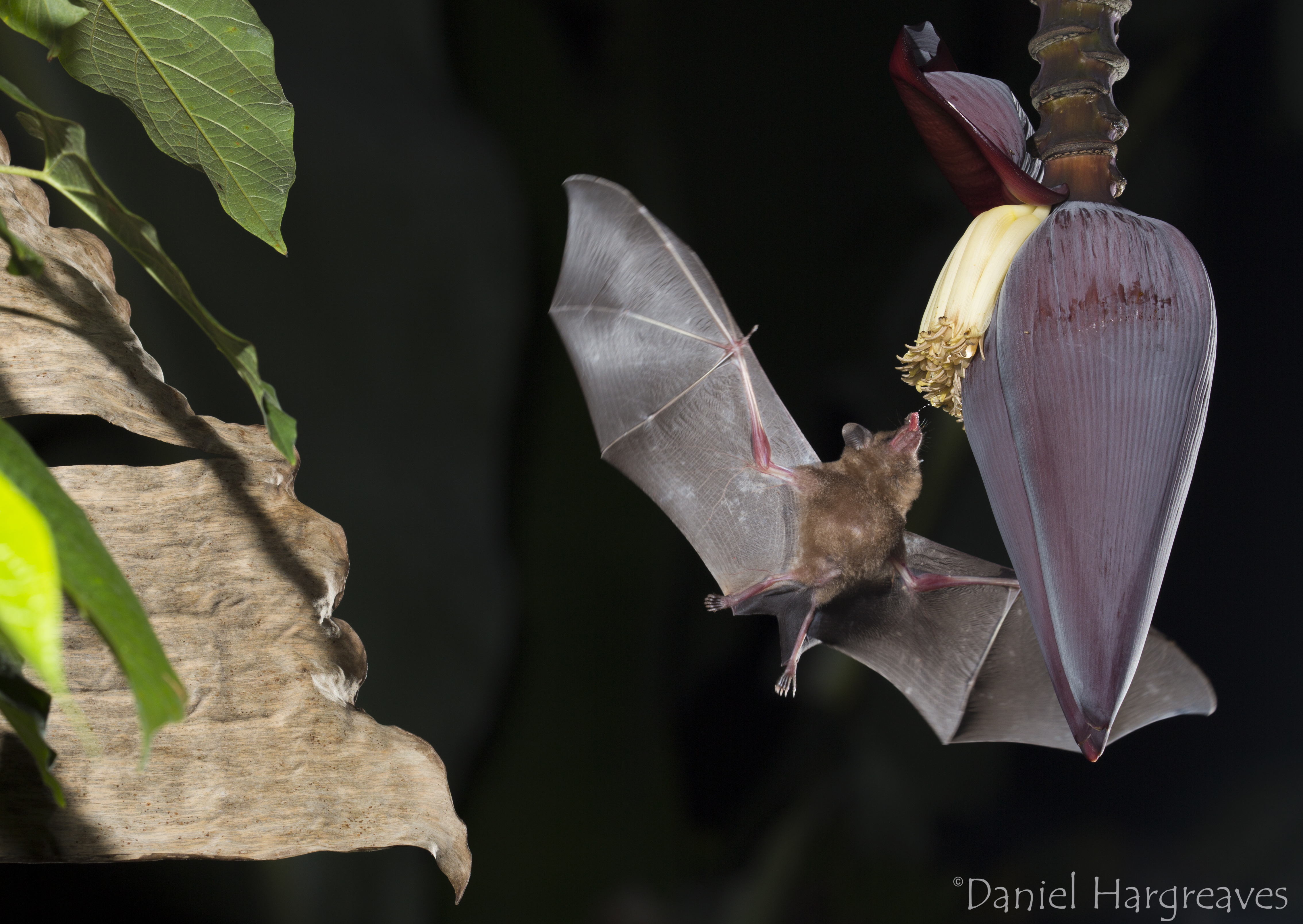25th February 2020

Bat pollinating banana plant (c) Daniel Hargreaves
Bats can suffer from a bad press at the best of times; think spooky Halloween bats or horror stories about bats and development. There are times when the media coverage about these amazing animals can tend to the ridiculous. We are seeing such stories doing the rounds at the moment because of the coronavirus disease (COVID-19) pandemic. It is suspected that bats may be the origin of the novel coronavirus, which is causing COVID-19, a respiratory illness, in hundreds of thousands of people around the world (the global spread caused by the movement of infected individuals and subsequent human to human infection).
The animal origins of this virus have yet to be confirmed definitively by scientists but it’s closely related to others known from bats. It's unlikely that bats directly infected humans, but that the spillover to people was through an intermediate host (a variety of species have been suggested, including pangolins). However, one of the reasons that the virus has infected so many people isn’t because of its possible bat origins but because it is transmitted from person to person, just like viruses that cause colds and flu.
The potential association with bats has led to some very wild claims in the media. Some newspapers are going so far as to suggest that we shouldn’t conserve bats, asking “why are we protecting them”? Well, that’s a great question and one that the Bat Conservation Trust is more than happy to answer.
Bats account for over 20% of the World’s mammals. Within this global diversity bats play vital roles in ecosystems, performing functions such as suppressing agricultural pests. For example, Mexican free-tailed bats in central Texas save cotton farmers in that area more than $740,000 annually; in Thailand bats benefit rice farmers estimated at the equivalent of supplying rice to 26,000 people per year (an economic value of more than $1.2 million); bats suppress pest-associated fungal growth and mycotoxin in corn crops and it is estimated this is worth more than $1 billion globally on this crop alone. Bats pollinate plants including certain commercial crops. In Indonesia bats play key role in durian fruit production which had an export value of almost $255 million in 2013. Other commercial crops pollinated by bats include mango, banana, cashew, guava and agave (used to make tequila). Bats also act as seed dispersers for many other plants making a vital contribution to forest regeneration
In the UK, bats are Indicator Species, because changes to our bat populations can indicate changes in other aspects of biodiversity or the environment which we all ultimately depend on. For example bats might suffer when there are problems with insect populations (because our native bats feed on insects) or when habitats are destroyed or poorly managed (for example, some bats only live in mature and connected woodlands).
Sadly, many bat species around the world are vulnerable or endangered due to factors ranging from loss and fragmentation of habitat, diminished food supply, destruction of roosts, disease, hunting for meat or ‘medicine’, and killing for a variety of other reasons.
It is some of these very threats that can result in cases of spillover of a virus into human populations (zoonoses) either directly or via an intermediate host such as livestock or wild animals hunted for food. SARS-CoV-2 is believed to have first infected humans at a market in Wuhan, China, where live wild animals were being sold for human consumption.
Bats can contribute to human health in a positive way. Bat immune systems are very different to other mammals (including humans). Researchers have found that, accounting for size, bats can live far longer than other mammal species. In fact there are many aspects of bats' ability to fight disease that researchers believe could ultimately lead to advances in human health care. We are already seeing life-saving benefits from studying bats; Draculin is an anti-coagulant that is based on a formula derived from vampire bat saliva.
Protecting bats and their habitats can actually reduce the risk of zoonotic disease and lead to advances in human health care.
If you want to find out more about the COVID-19 outbreak in the context of people and wildlife the EcoHealth Alliance website is a good source of factual information. You may also be interested in BCT’s own pages on diseases
and threats to bats. On the purely human health side of things the Public Health England website has a blog that is updated regularly Coronavirus - what you need to know and there is a lot of information on the World Health Organisation website.
Please help us continue to challenge misconceptions about bats by donating towards our work: https://www.bats.org.uk/support-bats/donate
Update: This article was initially posted on 29/01/20 but has been updated since to reflect the change in name of the novel coronavirus (SARS-CoV-2) and the disease it causes (COVID-19) as confirmed by the World Health Organisation as well as the spread of the disease.
